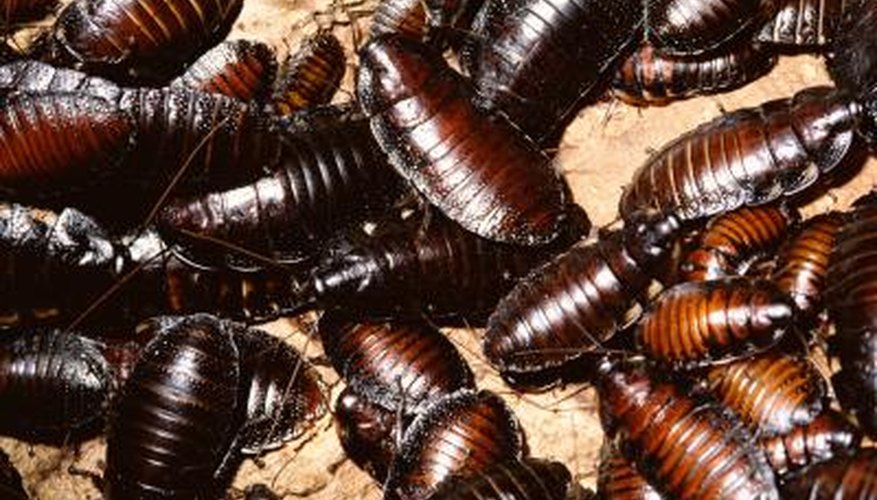Pest are any unwanted plants or animals that can be detrimental to humans and their endeavours, such as gardening. Pests can reside in your house or in the garden. Many pests lay such small eggs that they can be hard to see. The eggs of some insect pests hatch within hours, which can make identification difficult. Other pests can be identified by their larvae, if their eggs are too small or aren't noticeable.
- Pest are any unwanted plants or animals that can be detrimental to humans and their endeavours, such as gardening.
- The eggs of some insect pests hatch within hours, which can make identification difficult.
Flies lay their eggs in manure, rotting vegetation, exposed food or on animals. The eggs resemble very tiny grains of rice and are laid in large batches. Within a day, the eggs hatch and become fly larvae, or maggots. The maggots are creamy white, up to a half-inch long and are pointed on one end. After a few days, the maggots pupate into adult flies.
Cat fleas are pests that are often brought into a home on a pet's body and end up on carpeting, furniture or bedding. Flea eggs are only 1/32 inch long. They are pearly white and usually hatch within 5 days. Individual fleas lay 20 to 50 eggs a day.
Cockroaches are indoor and outdoor pests. Removing their egg cases before the eggs hatch is one way to control them. The size of the egg cases varies by species, but they are generally brown and can be as large as a kidney bean. Because most cockroach eggs take months to hatch, humans often unknowingly transport them when moving food or household goods from one home to another.
- Cat fleas are pests that are often brought into a home on a pet's body and end up on carpeting, furniture or bedding.
- The size of the egg cases varies by species, but they are generally brown and can be as large as a kidney bean.
Aphids are common garden pests that feed on almost any plant. In general, they lay their tiny eggs in a sheltered area of a plant, such as around a bud or along the spine on the underside of a leaf. Some aphids have very hearty eggs they lay on perennial plants in the fall that don't hatch until spring.
Many types of beetles feed on flour, cereal, chips, bread, noodles and other pantry staples. Because beetle eggs generally can't be seen, an infestation is usually identified by someone who finds small worms, or beetle larvae, in their food. In the case of the Indian meal moth, the infested food -- often dog food -- is covered with a weblike mass. If no one sees the eggs, beetle larvae or a weblike moss are indications it is time to clean the cupboards of food that may be contaminated. Grains should be sealed in containers.
- Aphids are common garden pests that feed on almost any plant.
- Because beetle eggs generally can't be seen, an infestation is usually identified by someone who finds small worms, or beetle larvae, in their food.
